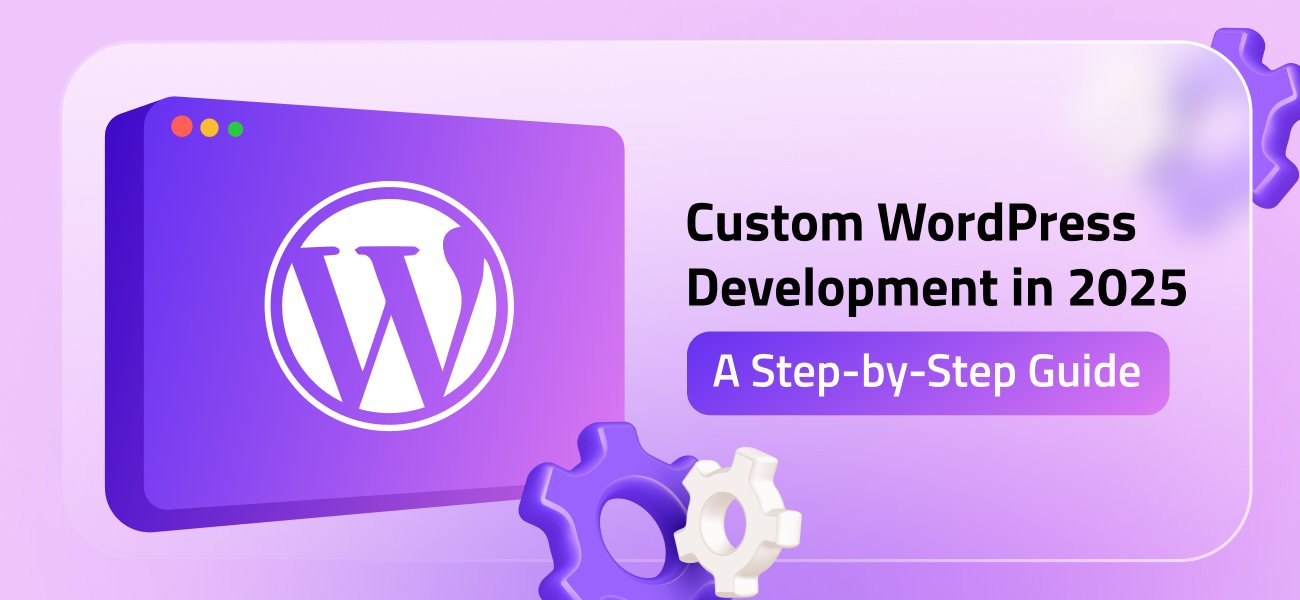At Hyfuntech, we constantly leverage the latest website development innovations.The web development world will change in 2026. New web development trends include AI-powered tools and architecture and design changes. This essay explains 15 2026 web development trends to make your next site project user-friendly, performant, and future-proof. We blend clear technical insight with practical advice—for example, how frameworks like Angular or platforms like WordPress and Laravel are adapting. Let’s dive in and explore what’s next.
1. AI & Machine Learning Integration
AI and ML are essential trends influencing site construction. GitHub Copilot automates boilerplate and setup activities in seconds using AI. This means developers focus more on creative problem-solving and less on mundane labor. Experts say [AI] solutions like GitHub Copilot and Tabnine are extensively utilised to automate repetitive coding chores with real-time suggestions. AI improves user personalisation (recommendation engines, chatbots). Personalisation engines and conversational interfaces cut support costs and increase engagement on e-commerce sites. AI in 2026 is a viable approach to speed up development and improve UX, not just a term.
2. Progressive Web Apps (PWAs)
Progressive Web Apps continue to gain momentum. PWAs blur the line between web pages and native apps, offering installation on the home screen, push notifications, and even offline use. As one analysis notes, PWAs deliver “a web-like UX, but the performance of a native app, loading fast on any device. Thanks to service workers and an app “shell” architecture, PWAs load instantly and work offline by caching content. Major sites report big gains after adopting PWAs (for example, Tinder’s PWA reduced load time from 11.9s to 4.7s). So it has:
- Offline capability: PWAs queue actions offline and sync when back online.
- App-like features: They use service workers and manifests for installation, push notifications, and full-screen mode.
- Performance boost: The app-shell model preloads core UI, so pages load ASAP.
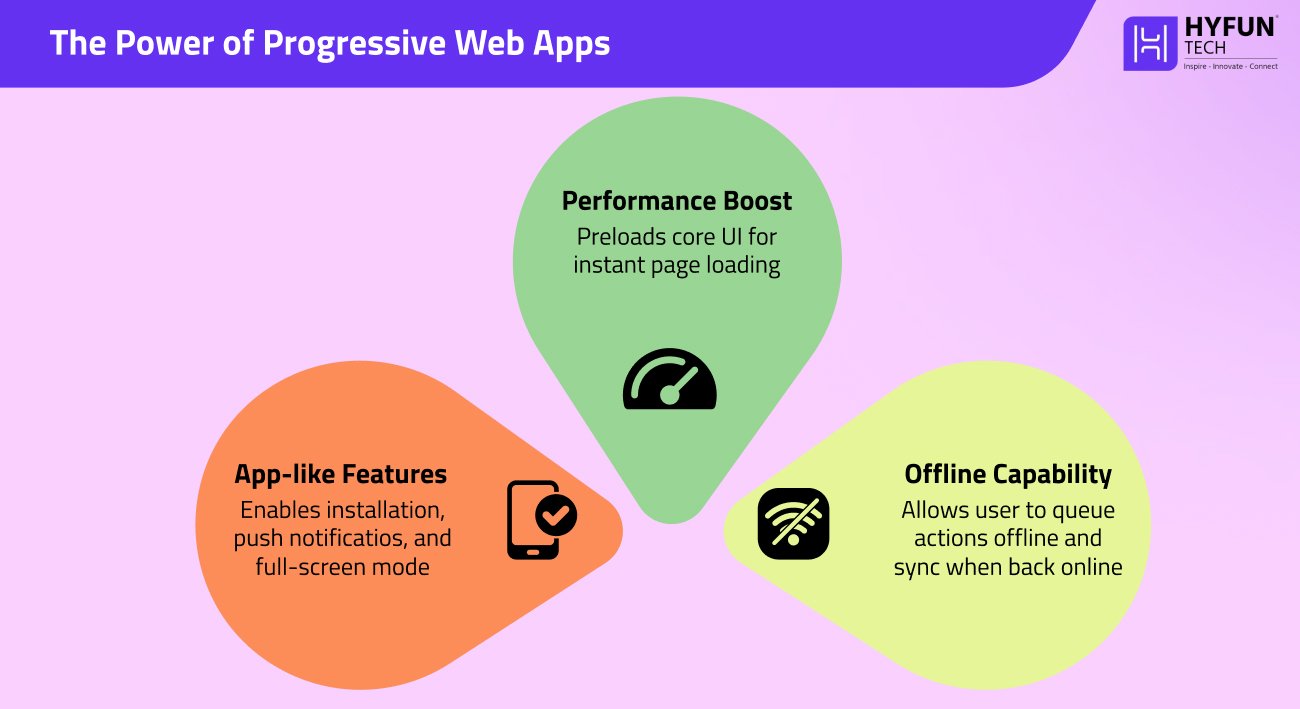
In 2026, PWAs will be mainstream. Every custom website development project should consider them to improve engagement and reliability.
3. Blockchain and Decentralised Web (Web3)
Blockchain is emerging in web development beyond cryptocurrencies. As a secure, distributed database, blockchain stores transactions in immutable chains. Each “block” relates to the previous one, preventing data tampering. This decentralized solution lets consumers control their data and eliminates single points of failure. Blockchain helps web developers to create dApps and trustless functionalities. An example would be Ethereum, whose smart contracts instantly execute transactions without an intermediary. Blockchain is used to safeguard patient health data and identity management in several industries. So at last, blockchain will improve web app transparency and resilience. Its cryptographic security and decentralization (no central server) are key trends toward “Web3” that developers can’t ignore.
4. Serverless Architecture
Serverless computing (Function-as-a-Service) continues to rise in 2026. In a serverless model, developers write functions and the cloud provider (AWS Lambda, Google Cloud Functions, etc.) runs them on demand. This “significant shift” means teams no longer manage servers directly. Benefits include cost savings (only pay per execution) and auto-scaling (functions spin up as needed).

Serverless “uses cloud technology to intercept user requests… without backend server configuration,” reducing infrastructure overhead. Developers can finally focus on writing code logic, and meanwhile the platform would handle scaling, patching, and uptime too. Practically speaking, going serverless can greatly shorten time-to-market for new features. Like, building an event-driven API in Lambda lets you deploy a full backend faster than setting up VM servers. We expect serverless to become standard for microservices and APIs in 2026.
5. Headless/Decoupled CMS
Headless (decoupled) content management is firmly trending. A headless CMS separates the content database from the front-end. Content is managed in the backend and delivered via APIs to any presentation layer. This gives giant flexibility: one backend can serve a website, mobile app, IoT device, etc., all from the same content source. As noted in industry writing, “A headless CMS separates your content backend from your presentation layer.” The decoupled design improves efficiency (much of the site may be provided statically) and security (the backend is hidden from users). Common headless configurations feed Angular or React with REST or GraphQL APIs. In short, headless CMS architecture is a must-know trend: it enables omnichannel publishing and faster sites.
6. Motion UI and Micro-Animations
Expect more animated and motion-driven interfaces. Motion UI frameworks like ZURB add CSS/JS movements to sites, making them more alive. Sliders, fade-in sections, and hover effects help direct users, highlight content, and improve UX. One trend report even ties this to our short attention spans: “users require websites… with engaging interfaces and appealing animations to keep them hooked”. In practice, developers might use libraries like Animate.css or write custom CSS transitions. The mostly used features would be:
- Micro-interactions: Like those button ripple effects or progress indicators when loading.
- Scroll-triggered animation: elements fade or move when the user scrolls.
- Animated page transitions: smoother load from one view to another.
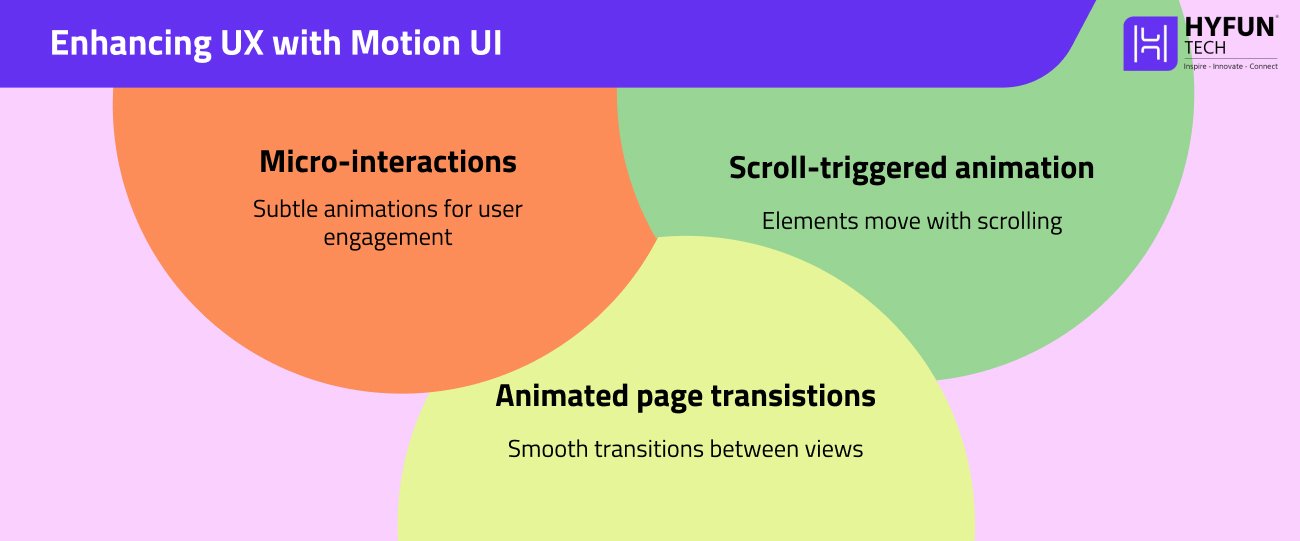
These animations should enhance UX without harming performance. Motion UI is no longer a gimmick – it’s a way to make sites feel modern and responsive to the user.
7. Dark Mode and User-Centric Design
Dark mode is becoming standard, not just a trendy color scheme. Many users now expect a light/dark toggle. Dark themes reduce eye strain in low light and save battery life on OLED screens (research shows up to 63% power savings). For example, one study found dark mode can “reduce visual fatigue” in low-light conditions. Development of a dark theme involves careful color and transition selections. Use softer grays instead of black and meet WCAG contrast ratios. In conclusion, dark mode improves battery life and comfort.
8. Voice Search and Conversational UI
Voice interfaces are now part of web UX. By 2026 most households will have voice assistants, so optimizing sites for voice search is crucial. Writing content in a conversational tone, adding FAQ schema, and using long-tail “question” keywords will help voice queries find your site. A survey found 71% of people prefer speaking to typing. Users commonly utilize natural language (“Where is the nearest coffee shop?” instead of “coffee shop open now”). Developers should make pages speedy and mobile-friendly as voice searches are frequently done on phones. Voice searches frequently have local purpose, thus supporting voice requires arranging material clearly, enhancing local SEO, and integrating voice commands in web apps. Voice search optimization is not just SEO flair—it’s a trend that makes sites more accessible and user-friendly in a hands-free world.
9. API-First Development and GraphQL
APIs are the backbone of modern web apps, and the “API-first” approach is gaining ground. In an API-first design, services and data endpoints are treated as primary, with front-ends just consuming them.
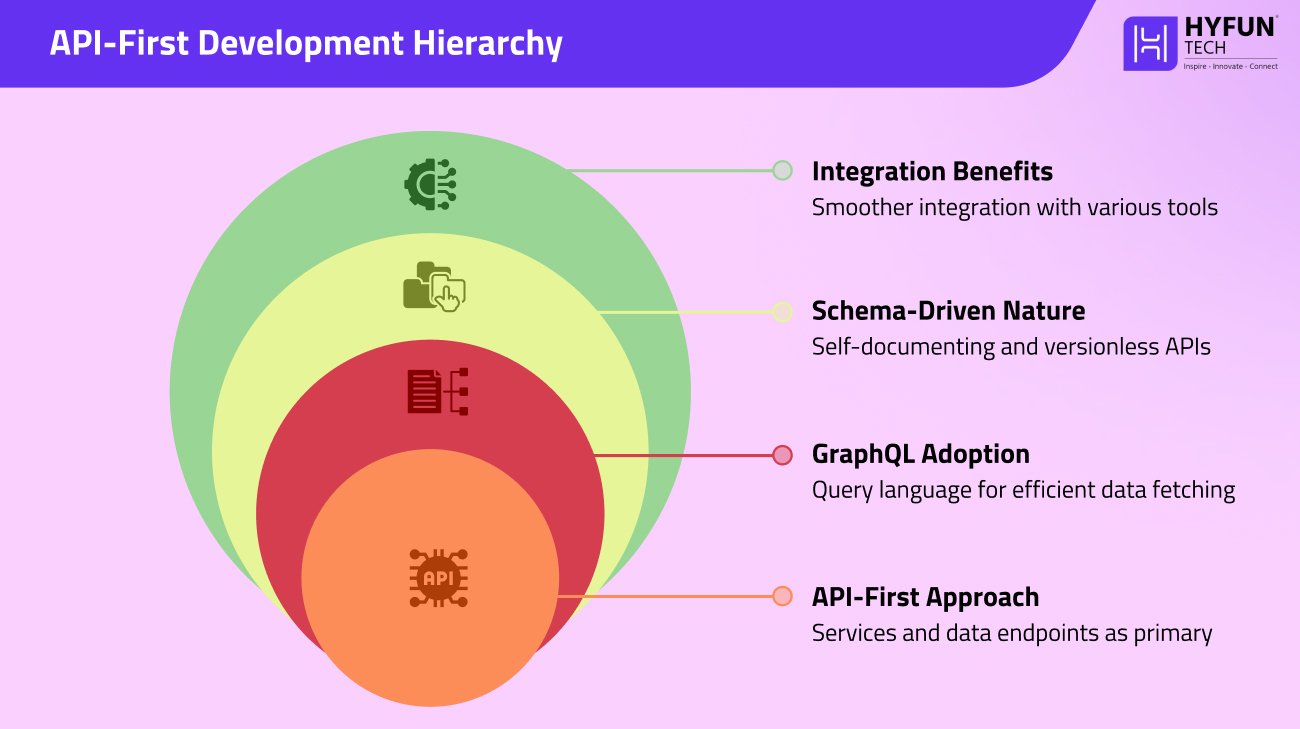
A key sub-trend is GraphQL, a query language for APIs. GraphQL lets clients request exactly the data they need through a single endpoint, avoiding over-fetching. Strapi’s analysis notes “GraphQL adoption is a significant trend… GraphQL is increasingly replacing REST APIs”. The schema-driven nature of GraphQL makes it self-documenting and version less. For developers, GraphQL simplifies data fetching and often improves performance. In practice, you might use GraphQL in a headless CMS or between a front-end (Angular, React) and backend. The bottom line: expect more apps using GraphQL or well-designed REST APIs. An API-first mindset (often combined with headless CMS setups) makes integration with mobile apps, microservices, and third-party tools smoother.
10. Cybersecurity and Data Protection
Security is a top concern in 2026. Web developers must integrate robust defenses from the start (DevSecOps). Basic measures like HTTPS/TLS are mandatory: every site should use TLS encryption (HTTPS) to secure data in transit. Modern ciphers and regularly updated certificates help maintain trust. Beyond that, strong authentication (multi-factor auth) and regular auditing are key. As one expert piece notes, implementing TLS not only protects users but also boosts SEO, since search engines rank secure sites higher.

Ongoing trends include zero-trust architectures and AI-powered threat detection. In practice, this means using security headers, scanning for vulnerabilities, and training teams in good “cyber hygiene.” The takeaway: in 2026, security-first design is not optional. It’s both an industry expectation and often a legal requirement.
11. WebAssembly (Wasm)
WebAssembly is transforming performance-heavy web apps. It’s a binary instruction format that runs code nearly as fast as native machine code. Unlike JavaScript, WebAssembly can be compiled from languages like C++ or Rust and then executed by the browser. This means computation-intensive tasks (games, simulations, video processing) can run in the browser without plugins.
For example, Figma ported its editor to WebAssembly, cutting load time by 3x and delivering near-desktop performance in the browser. In 2026 we’ll see WebAssembly used wherever speed matters: augmented reality on the web, 3D graphics, and heavy data processing. In short, WebAssembly is a rising trend that lets web apps do much more by pushing computation into a fast, sandboxed environment.
12. WebRTC and Real-Time Communication
Real-time web communication is a growing norm. WebRTC is an open technology that enables peer-to-peer audio, video, and data streaming directly in the browser. This eliminated the need for third-party plugins. WebRTC’s key benefits are very low latency and built-in encryption. It uses DTLS/SRTP for end-to-end security, so voice/video chats are private by default.
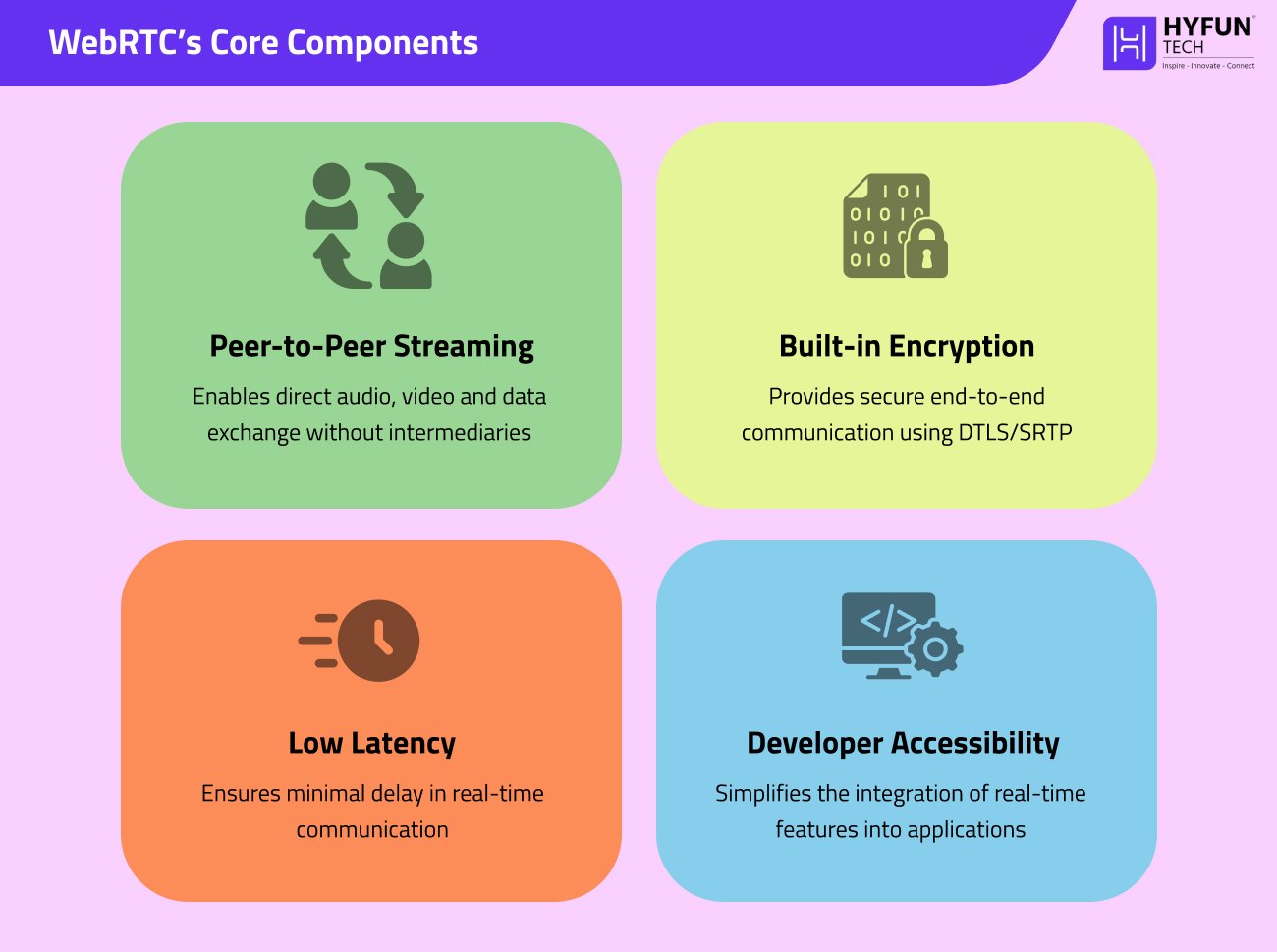
For developers, WebRTC means you can add video calls, live chat, or streaming features in apps without complex workarounds. Platforms like Slack and Discord rely on WebRTC under the hood. In 2026, web apps for telehealth, online education, gaming, or customer support will commonly use WebRTC to keep users connected in real time.
13. Edge Computing
Edge computing is about moving processing closer to the user or device, rather than relying solely on central data centers. This trend cuts latency and can greatly improve performance for real-time applications. For example, an IoT sensor or mobile app might do initial processing on a local edge server before sending data to the cloud. In web dev, this often ties into CDNs and edge functions (e.g., serverless code running on the CDN).
The big benefit is speed: requests travel a shorter distance. As one write-up explains, edge computing “reduces response times” and “enhances performance” by handling data close to the user. In practice, 2026 sites may use edge deployments for tasks like image resizing, video transcoding, or delivering personalized content from a nearby server. This trend helps deliver faster, more resilient web experiences, especially for global audiences.
14. Low-Code / No-Code Development
Platforms that require little or no coding are now mainstream. Low-code/no-code tools let non-programmers build websites and apps via drag-and-drop interfaces. By 2026, these tools will be even more powerful. Strapi notes that they “democratize application development,” enabling users with minimal programming knowledge to assemble functionality visually. The market for low-code technologies is booming. In practice, many businesses use no-code tools for simple apps or internal tools, while professional developers use low-code to speed up work.
For example, within WordPress (a key part of our services), builders like Gutenberg (block editor) let content creators design pages without writing HTML. The trend means faster prototyping and more agile development. However, it’s important to combine low-code with good architecture: complex systems still need experienced devs to ensure scalability and security. Overall, low-code/no-code will be a helpful complement in 2026, not a total replacement for custom code.
15. Accessibility and Inclusive Design
Finally, accessibility is increasingly non-negotiable. Building inclusive websites is both socially responsible and often legally required (e.g., WCAG standards). These guidelines ensure people with disabilities can use the web. Strapi highlights that “accessibility standards provide the framework for creating inclusive digital experiences” and are integral to 2026 trends. In practice, this means writing semantic HTML, adding alt text for images, ensuring keyboard navigation, and meeting color-contrast ratios. Regulations like the EU Accessibility Act (enforced by 2026) demand WCAG 2.1 AA compliance for many sites. By following these standards, developers ensure their work reaches the widest audience and avoids legal risks.
That’s it. That Was Our List!
2026’s web development trends center on smarter, faster, and more user-centric technologies. Hyfuntech stays on top of them: our team builds custom website development projects using cutting-edge frameworks and best practices. Whether it’s a WordPress development project with a modern headless setup, an Angular development job that uses PWAs and GraphQL, or a Laravel development backend optimised for performance and security, we integrate the latest trends into our work. The future of web development is here—and by embracing these trends, Hyfuntech ensures your site is future-ready, high-performing, and user-friendly.
